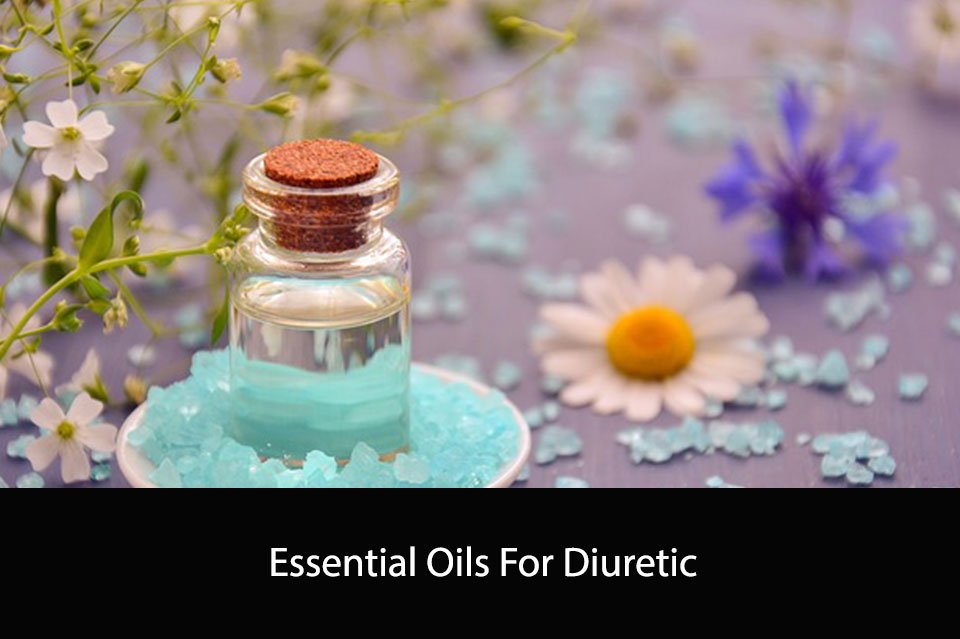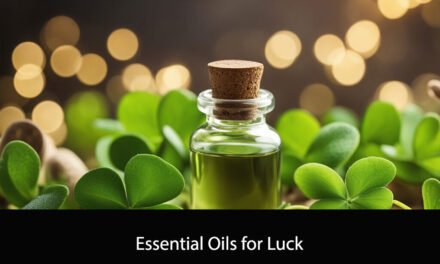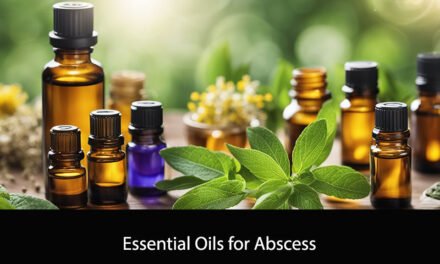Essential oils have been used for centuries for their therapeutic properties. Nowadays, they are becoming increasingly popular as a natural alternative to traditional medicine. One condition that has gained attention in recent years is melasma, a common skin condition that causes brown or gray patches on the face.
Melasma is caused by an overproduction of melanin, the pigment that gives color to our skin. It is often triggered by hormonal changes, such as pregnancy or birth control pills, and can also be exacerbated by sun exposure. While there are several treatments available, such as chemical peels and laser therapy, some people are turning to essential oils as a natural remedy.
In this article, we will explore the use of essential oils for melasma. We will discuss the properties of different oils and how they can be used to reduce the appearance of dark spots on the skin. It is important to note that while essential oils can be beneficial, they should not be used as a substitute for medical treatment. As always, it is best to consult with a healthcare professional before trying any new remedies.

Understanding Melasma
Melasma is a common skin condition that affects many people, especially women. It is a type of hyperpigmentation that appears as dark, patchy areas on the face, neck, and arms. Melasma is caused by an overproduction of melanin, the pigment that gives our skin its color.
While the exact cause of melasma is unknown, there are several factors that can contribute to its development. These include hormonal changes, sun exposure, genetics, and certain medications.
Melasma is often referred to as the “mask of pregnancy” because it is common during pregnancy due to hormonal changes. However, it can also affect women who are not pregnant and men.
There are several types of melasma, including epidermal, dermal, and mixed. Epidermal melasma is the most common type and appears as dark brown patches on the surface of the skin. Dermal melasma is less common and appears as blue-gray patches deeper in the skin. Mixed melasma is a combination of both types.
It is important to note that melasma is a harmless condition and does not pose any health risks. However, it can be a cosmetic concern for many people and can affect their self-esteem.
Essential Oils: An Overview
Essential oils are concentrated plant extracts that have been used for centuries for their therapeutic properties. They are obtained through steam distillation or cold pressing of various parts of plants, including flowers, leaves, stems, and roots. Essential oils are highly potent and should be used with caution, as they can cause adverse reactions if not properly diluted.
There are many essential oils that are believed to be effective in treating melasma, a skin condition characterized by dark, patchy areas on the face. Some of the most commonly used essential oils for melasma include:
- Frankincense oil: This oil is known for its anti-inflammatory and antioxidant properties, which can help reduce the appearance of dark spots on the skin.
- Lavender oil: Lavender oil has been shown to have skin-lightening properties, making it an effective treatment for melasma.
- Lemon oil: Lemon oil is a natural skin lightener that can help fade dark spots on the skin. However, it should be used with caution, as it can cause photosensitivity.
- Rosehip oil: Rosehip oil is rich in vitamin C, which can help brighten the skin and reduce the appearance of dark spots.
When using essential oils for melasma, it is important to dilute them properly before applying them to the skin. A carrier oil, such as coconut oil or jojoba oil, can be used to dilute essential oils and prevent skin irritation.
In addition to their skin-lightening properties, essential oils can also help improve the overall health and appearance of the skin. They can help reduce inflammation, promote cell regeneration, and improve skin hydration. However, it is important to note that essential oils should not be used as a substitute for medical treatment. If you have severe melasma or other skin conditions, it is important to consult a dermatologist for proper diagnosis and treatment.
The Science Behind Essential Oils and Melasma
Melasma is a common skin condition that causes dark, discolored patches on the face. While the exact cause of melasma is unknown, it is believed to be related to hormonal changes, sun exposure, and genetics. Essential oils have gained popularity as a natural treatment option for melasma. In this section, we will explore the science behind essential oils and their potential benefits for melasma.
Essential oils are highly concentrated plant extracts that contain aromatic compounds. These compounds have been found to have a wide range of therapeutic properties, including anti-inflammatory, antimicrobial, and antioxidant effects. Some essential oils have also been found to have skin-lightening properties, which may make them useful for treating melasma.
One of the most commonly used essential oils for melasma is lemon essential oil. Lemon essential oil contains a compound called limonene, which has been found to have skin-lightening properties. In a study published in the Journal of Clinical and Aesthetic Dermatology, researchers found that a combination of lemon essential oil and glycolic acid was effective in reducing the appearance of melasma.
Another essential oil that may be beneficial for melasma is frankincense essential oil. Frankincense essential oil has been found to have anti-inflammatory and antioxidant properties, which may help to reduce the inflammation and oxidative stress associated with melasma. In a study published in the Journal of Cosmetic Dermatology, researchers found that a cream containing frankincense essential oil was effective in reducing the severity of melasma.
It is important to note that while essential oils may be beneficial for melasma, they should not be used as a replacement for medical treatment. If you have melasma, it is important to consult with a dermatologist to determine the best treatment options for your individual needs. Additionally, essential oils should be used with caution and under the guidance of a healthcare professional, as they can cause skin irritation and other adverse effects if not used properly.
Top Essential Oils for Melasma
Lemon Essential Oil
Lemon essential oil is a powerful natural remedy for treating melasma. It has skin lightening properties that help reduce the appearance of dark spots and hyperpigmentation. Lemon essential oil is also rich in antioxidants that protect the skin from damage caused by free radicals.
To use lemon essential oil for melasma, mix a few drops of the oil with a carrier oil like coconut oil or sweet almond oil. Apply the mixture to the affected areas of the skin and leave it on for 15-20 minutes before rinsing off with warm water.
Frankincense Essential Oil
Frankincense essential oil is another effective essential oil for treating melasma. It has anti-inflammatory and skin regenerating properties that help reduce the appearance of dark spots and improve skin texture. Frankincense essential oil also helps to boost collagen production, which can help reduce the signs of aging.
To use frankincense essential oil for melasma, mix a few drops of the oil with a carrier oil like jojoba oil or argan oil. Apply the mixture to the affected areas of the skin and leave it on for 15-20 minutes before rinsing off with warm water.
Lavender Essential Oil
Lavender essential oil is a gentle and soothing essential oil that can help reduce the appearance of melasma. It has anti-inflammatory properties that help calm the skin and reduce redness. Lavender essential oil also helps to balance the skin’s natural oils, which can help prevent further hyperpigmentation.
To use lavender essential oil for melasma, mix a few drops of the oil with a carrier oil like grapeseed oil or avocado oil. Apply the mixture to the affected areas of the skin and leave it on for 15-20 minutes before rinsing off with warm water.
Tea Tree Essential Oil
Tea tree essential oil is a natural antiseptic that can help reduce inflammation and prevent infection. It also has skin lightening properties that help reduce the appearance of melasma. Tea tree essential oil is also effective in treating acne, which can be a contributing factor to melasma.
To use tea tree essential oil for melasma, mix a few drops of the oil with a carrier oil like hemp seed oil or pumpkin seed oil. Apply the mixture to the affected areas of the skin and leave it on for 15-20 minutes before rinsing off with warm water.
Rosemary Essential Oil
Rosemary essential oil is a natural astringent that can help reduce the appearance of melasma. It has skin rejuvenating properties that help improve skin tone and texture. Rosemary essential oil also helps to stimulate blood circulation, which can help promote healthy skin.
To use rosemary essential oil for melasma, mix a few drops of the oil with a carrier oil like olive oil or almond oil. Apply the mixture to the affected areas of the skin and leave it on for 15-20 minutes before rinsing off with warm water.

How to Use Essential Oils for Melasma
Direct Application
Direct application of essential oils is the most common way to use them for melasma. Before applying essential oils, make sure to dilute them with a carrier oil such as coconut, jojoba, or almond oil. This will help prevent skin irritation and sensitivity.
To use essential oils for melasma, mix 1-2 drops of essential oil with 1 tablespoon of carrier oil. Apply the mixture to the affected area using a cotton ball or your fingertips. Gently massage the oil into the skin using circular motions. Repeat this process twice a day for best results.
Some essential oils that are effective for melasma include:
- Lemon oil
- Frankincense oil
- Carrot seed oil
- Lavender oil
- Rosehip oil
Aromatherapy
Aromatherapy is another way to use essential oils for melasma. Simply add a few drops of essential oil to a diffuser or inhaler and inhale the scent. This method can help reduce stress and anxiety, which can contribute to melasma.
Some essential oils that are effective for aromatherapy include:
- Bergamot oil
- Chamomile oil
- Neroli oil
- Patchouli oil
- Sandalwood oil
Oil Infused Products
Using oil-infused products is another way to incorporate essential oils into your melasma treatment. Look for products such as facial oils, serums, and moisturizers that contain essential oils. These products can help hydrate and nourish the skin while also reducing the appearance of melasma.
When using oil-infused products, make sure to read the label carefully to ensure that they contain high-quality essential oils. Some essential oils that are effective for melasma include:
- Rose oil
- Geranium oil
- Clary sage oil
- Helichrysum oil
- Myrrh oil
Remember to always do a patch test before using any new essential oil or product on your skin. If you experience any irritation or sensitivity, discontinue use immediately.
Potential Risks and Precautions
When using essential oils for melasma, it is important to be aware of potential risks and take necessary precautions to avoid adverse effects. Here are some things to keep in mind:
- Essential oils are highly concentrated plant extracts and should be used with caution. Always dilute them with a carrier oil before application to avoid skin irritation or sensitivity.
- Some essential oils, such as bergamot and lime, can cause phototoxicity when exposed to sunlight. This can lead to severe burns or skin damage. Avoid using these oils before going out in the sun or use them in a diffuser instead of applying them topically.
- Pregnant or nursing women should consult their healthcare provider before using essential oils. Some oils, such as clary sage and rosemary, are not recommended for use during pregnancy.
- People with sensitive skin or allergies should perform a patch test before using any new essential oil. Apply a small amount to the inside of your wrist and wait 24 hours to see if any adverse reactions occur.
- Essential oils should not be ingested unless under the guidance of a qualified healthcare practitioner. Ingesting essential oils can be toxic and cause serious health problems.
Overall, essential oils can be a safe and effective treatment for melasma when used properly. By taking necessary precautions and using them in moderation, you can enjoy the benefits of essential oils without experiencing any adverse effects.
Consulting a Professional
When it comes to treating melasma with essential oils, it’s important to consult a professional before using any new products or treatments. A dermatologist or licensed aromatherapist can help you determine which essential oils are safe and effective for your specific skin type and condition.
During your consultation, be sure to provide your healthcare provider with a complete medical history, including any allergies or sensitivities you may have. This will help them make informed recommendations and avoid any potential adverse reactions.
Additionally, it’s important to follow the recommended usage guidelines for any essential oils you use. Some oils may need to be diluted with a carrier oil before use, while others may only be safe to use in small amounts or for short periods of time.
Overall, seeking professional guidance can help ensure that you use essential oils safely and effectively to treat melasma.
Conclusion
In conclusion, essential oils can be a natural and effective option for those looking to treat melasma. While there is limited scientific research on the topic, anecdotal evidence suggests that some essential oils may help to reduce the appearance of melasma and improve skin health overall.
When using essential oils, it is important to dilute them properly and perform a patch test before applying them to larger areas of skin. Additionally, it is important to note that essential oils should not be used as a replacement for medical treatment or advice from a healthcare professional.
Some of the most promising essential oils for melasma include:
- Frankincense oil
- Lavender oil
- Lemon oil
- Sandalwood oil
- Helichrysum oil
It is important to note that essential oils should be used in conjunction with other treatments, such as sunscreen and topical creams, for best results. Additionally, it may take time to see results, and consistent use is key.
Overall, while more research is needed, essential oils can be a natural and safe option for those looking to improve the appearance of melasma. As always, it is important to consult with a healthcare professional before starting any new treatment regimen.

Frequently Asked Questions
What are some effective natural treatments for hyperpigmentation?
There are several natural treatments that can help reduce hyperpigmentation, including using lemon juice, aloe vera gel, and turmeric powder. These natural remedies can help lighten the skin and reduce the appearance of dark spots.
Can essential oils help reduce the appearance of melasma?
Yes, essential oils can be effective in reducing the appearance of melasma. Some of the best essential oils for melasma include frankincense oil, lavender oil, and tea tree oil. These oils can help lighten the skin and reduce the appearance of dark spots.
What are the benefits of using frankincense oil for skin?
Frankincense oil has many benefits for the skin, including reducing the appearance of fine lines and wrinkles, improving skin tone and elasticity, and reducing the appearance of dark spots and hyperpigmentation. It also has anti-inflammatory and antibacterial properties, which can help prevent acne and other skin conditions.
How long does it take to see results when using black seed oil for melasma?
The time it takes to see results when using black seed oil for melasma can vary depending on the severity of the condition and how often the oil is applied. Some people may see results within a few weeks, while others may take several months to see a noticeable improvement.
What are some potential side effects of using bio oil for melasma?
Bio oil is generally safe to use for melasma, but some people may experience side effects such as skin irritation, redness, or itching. It is important to do a patch test before using bio oil to ensure that you are not allergic to any of the ingredients.
Are there any essential oil recipes for reducing hyperpigmentation?
Yes, there are several essential oil recipes that can help reduce hyperpigmentation. One popular recipe is to mix frankincense oil, lavender oil, and carrier oil (such as coconut oil or jojoba oil) and apply it to the affected area twice a day. Another recipe is to mix lemon juice, honey, and turmeric powder and apply it to the skin for 15-20 minutes before rinsing off.





